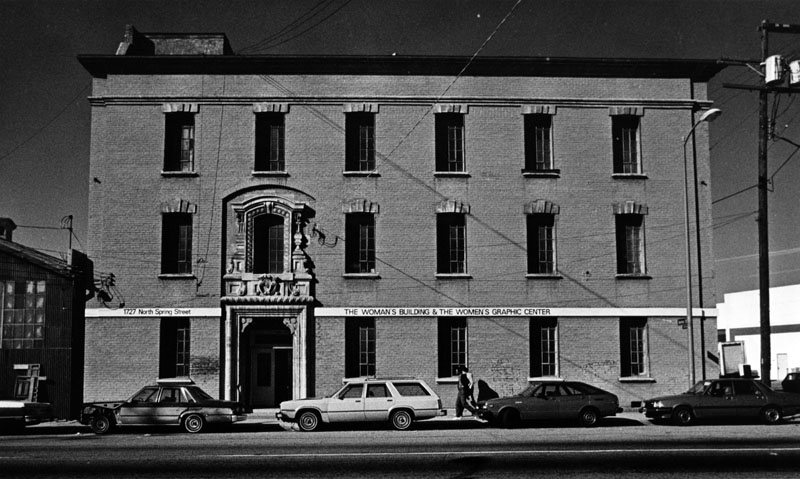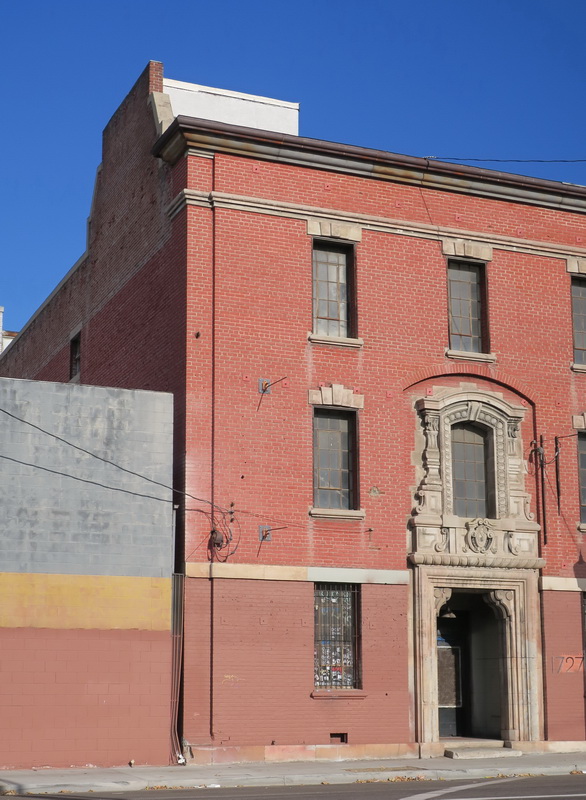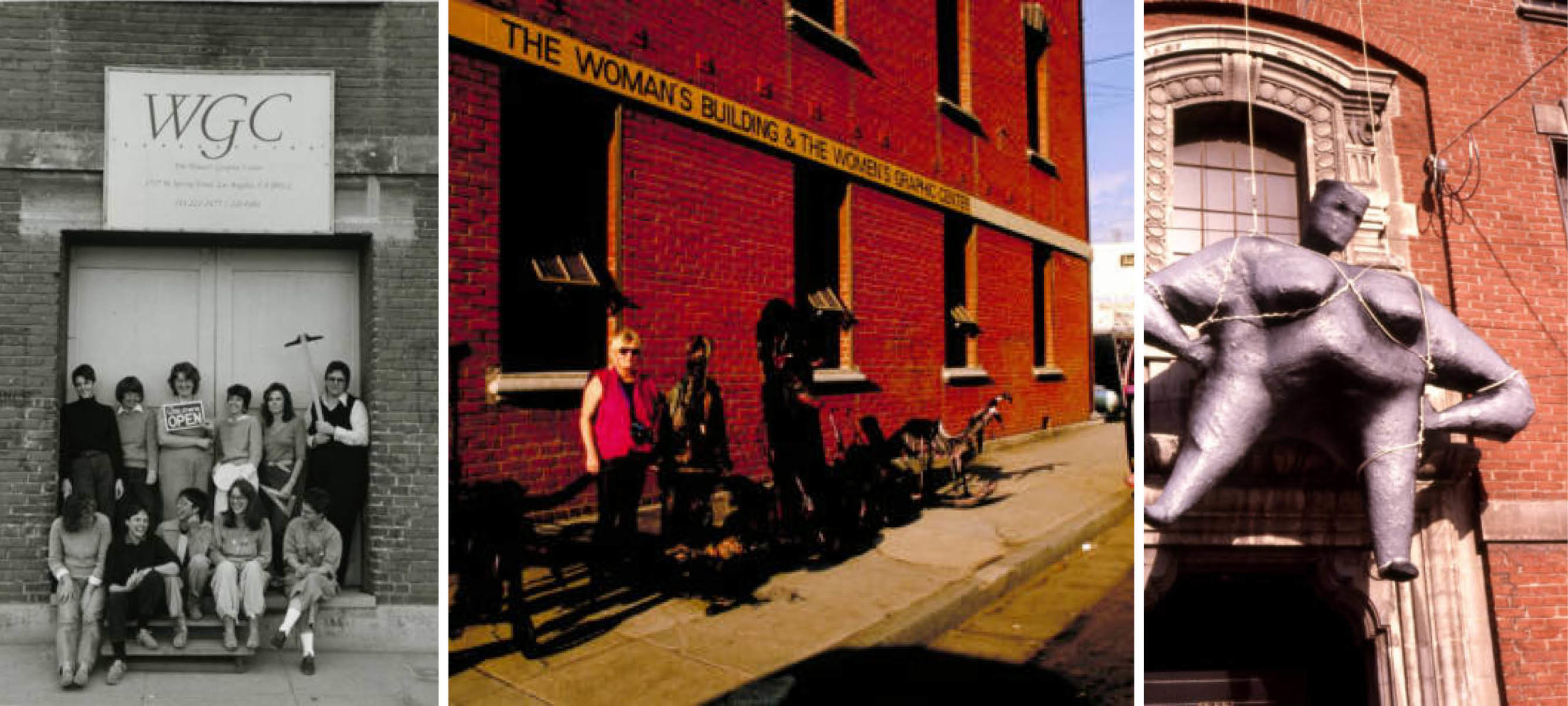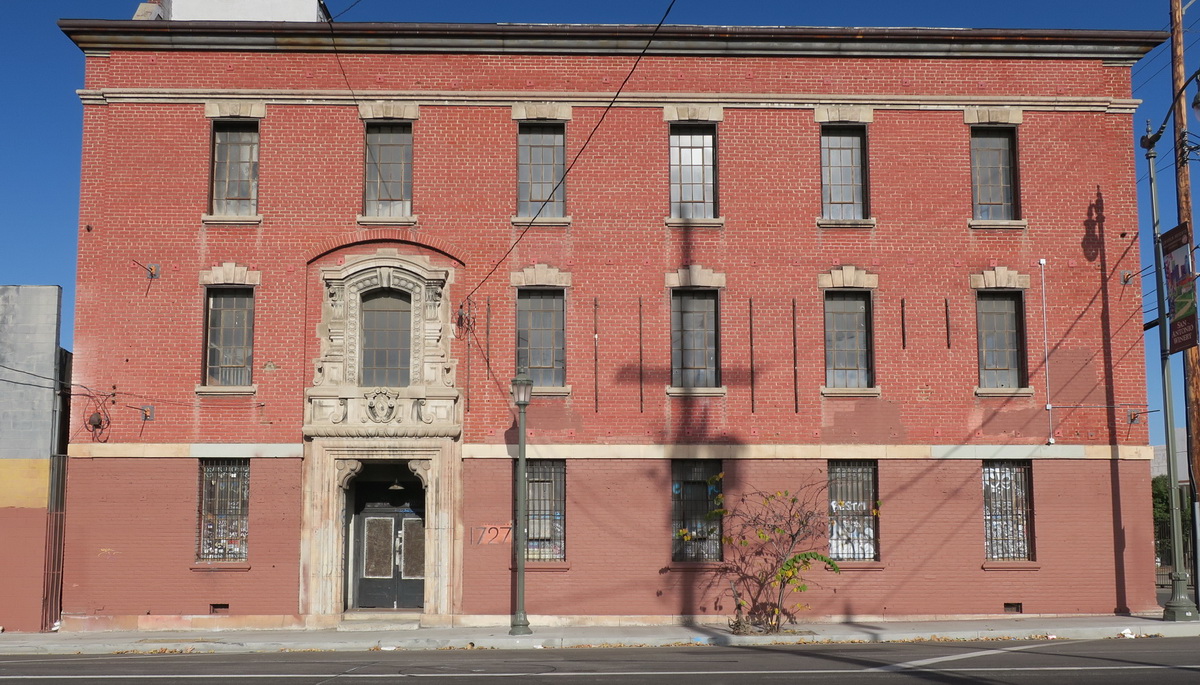
The late 1960s and 1970s marked a particularly important period in the development of women-centered, women-occupied institutions, a period often referred to as Second Wave Feminism or the Women’s Liberation Movement. In order to construct a more inclusive and equitable world for women in the arts during this period, feminist artists began forming their own alternative art spaces, independent from traditionally male-centered art institutions.
The Los Angeles Woman’s Building was founded in 1973 during the height of the feminist art movement.

Woman’s Building, view northwest, 1983 (courtesy Los Angeles Public Library)
Originally operating out of the Chouinard Art Institute building on Grandview Boulevard in downtown, the Woman’s Building relocated to 1727 N. Spring Street, a 1914 brick industrial building originally constructed for the Standard Oil Company Sales Department offices, in 1975.
Located Southeast of the Los Angeles State Historic Park (the former site of the Southern Pacific Transportation Company’s River Station), the building is also a notable work of renowned Southern California architect Myron Hunt. This three-story Beaux-Arts style building is adorned with cast stone detailing, including window headers, molded lintels, and stringcourses. The building’s distinctive recessed entryway features a highly decorative cast stone surround, complete with a shield engraved with the letter “S” for Standard Oil, as well as a second-story window crown.

Woman’s Building, primary entrance, view northwest (ARG, 2020)
During its 15-year occupation of the Spring Street property, the Los Angeles Woman’s Building became one of the nation’s foremost feminist cultural institutions. Its national impact is apparent in the breadth of women artists who studied and worked at and visited the Building, in the subsequent feminist art spaces it inspired in other parts of the country, and in the highly influential feminist art content that originated from the Building. Over nearly two decades, the Woman’s Building provided a space for feminist art education and expression and played a critical role in establishing women artists in the mainstream art movement.

Woman’s Building, Women’s Graphic Center, n.d. (left), Roof installation of “Great Lady Rising”(right) (courtesy of Otis College of Art and Design)
In 1991, after suffering a series of financial setbacks, the Woman’s Building closed its doors. Its Board of Directors has continued to remain active in preserving the Building’s history through collaborations with Metabolic Studio, Otis College of Art and Design, and the Getty Foundation. The Building’s papers are located at the Archives of American Art at the Smithsonian Institute, and the Woman’s Building slide collection was digitized by Otis with assistance from the Getty.

Woman’s Building, southeast (primary) façade, view northwest (ARG, 2020)
While the history of the Woman’s Building has been well documented and preserved, the fate of the building itself is uncertain. In the years since the closing of the Woman’s Building, the Spring Street property has been temporarily occupied by artists’ lofts and has been used as a filming location. However, the building has also had periods of vacancy and is generally in a state of neglect. Concerned by the building’s dilapidated condition as well as the potential threat of future development, the Los Angeles Conservancy, a non-profit organization that advocates for the preservation of historic places throughout Los Angeles County, hired Architectural Resources Group to prepare a Historic-Cultural Monument nomination for the building. With support from many former members of the Woman’s Building as well as the community, the nomination passed in 2018, ensuring protection and a design review process should there ever be a project or modifications proposed to the building.
